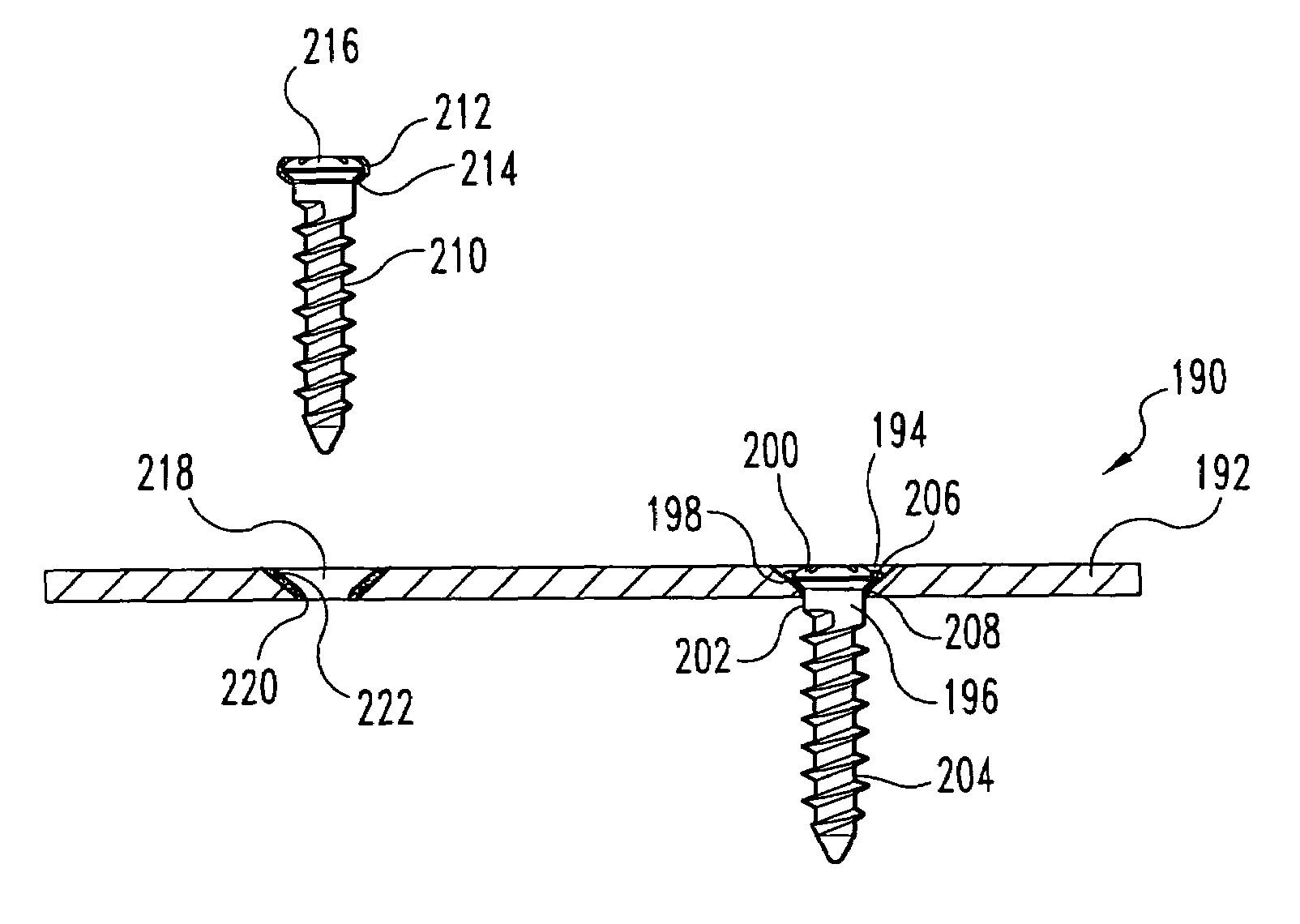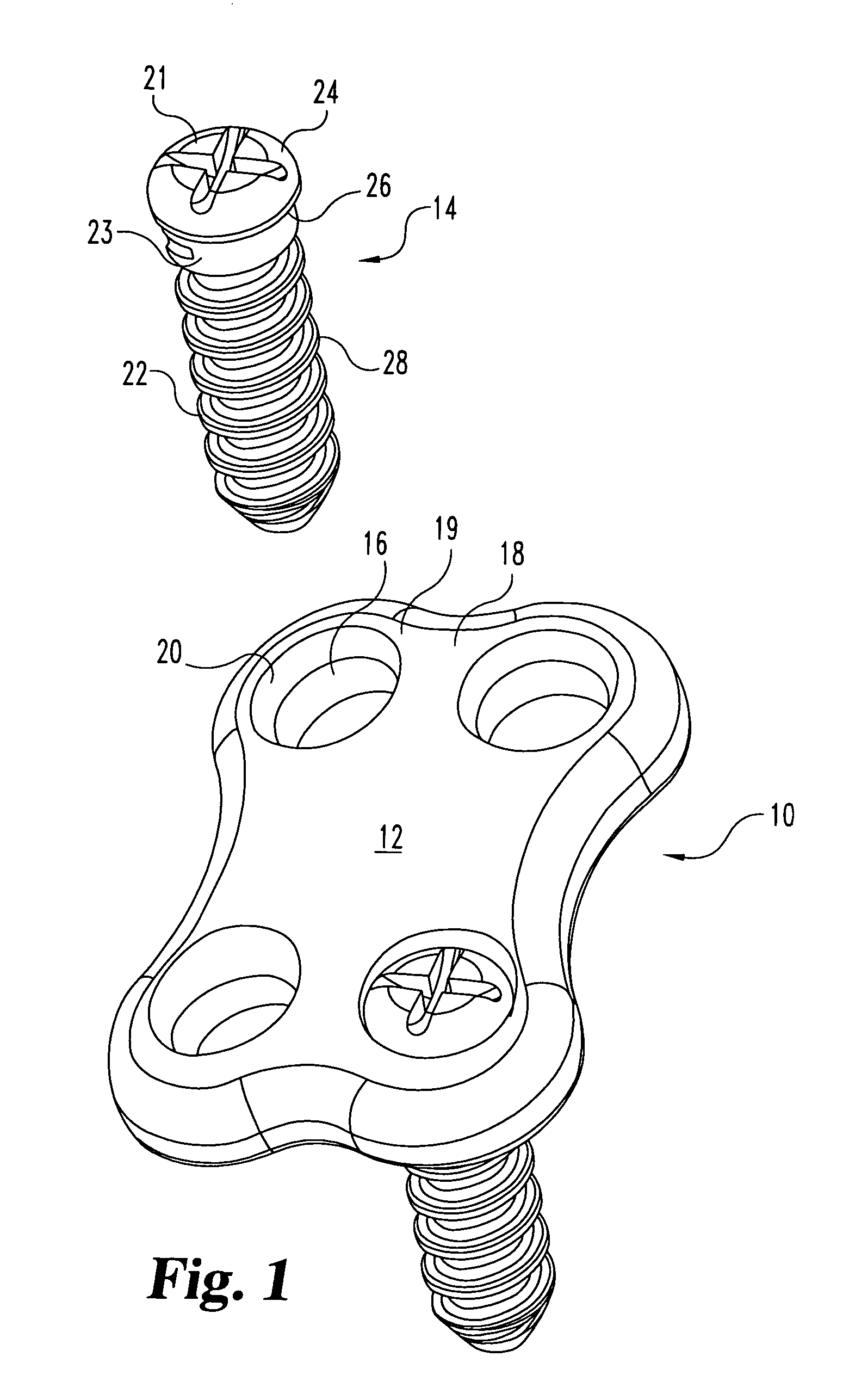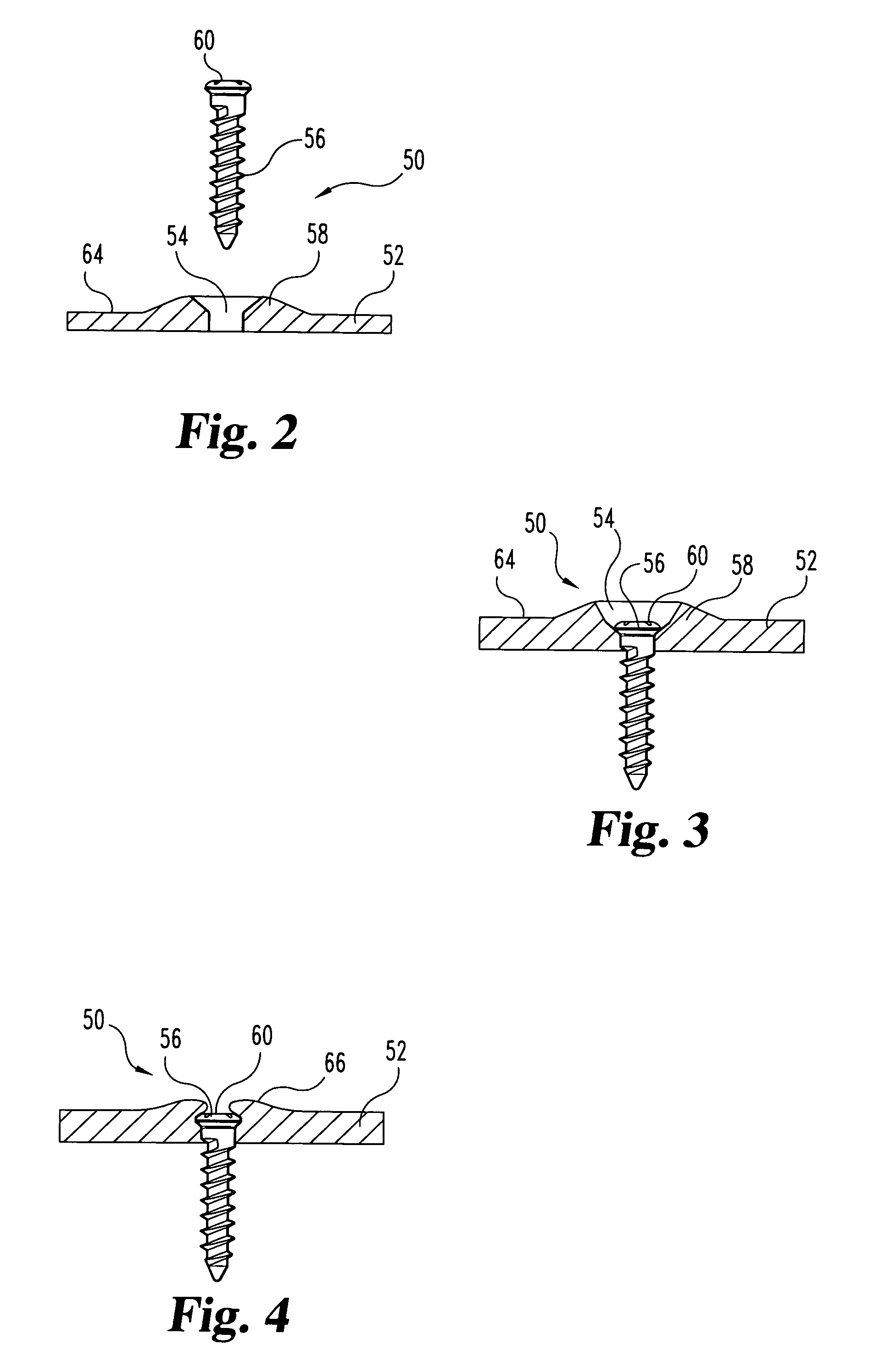Non-metallic implant devices and intra-operative methods for assembly and fixation
a non-metallic, implant device technology, applied in the field of orthopaedic implants and methods of treating bone defects, can solve the problems of non-metallic medical implants that are prone to refracture, the mechanical strength of non-metallic implants is lower than that of their metallic counterparts, and the need for continued developmen
- Summary
- Abstract
- Description
- Claims
- Application Information
AI Technical Summary
Problems solved by technology
Method used
Image
Examples
Embodiment Construction
[0035]For the purposes of promoting an understanding of the principles of the invention, reference will now be made to the embodiments illustrated herein and specific language will be used to describe the same. It will nevertheless be understood that no limitation of the scope of the invention is thereby intended. Any alterations and further modifications in the described processes, systems, or devices, and any further applications of the principles of the invention as described herein, are contemplated as would normally occur to one skilled in the art to which the invention relates.
[0036]In general, one form of the present invention includes an implant comprising a bone plate or other suitable remedial orthopedic structure and a bone fastener. The bone fastener can be used to secure the bone plate to the bone tissue to maintain the desired position of the implant. In a more specific form, the implant is securely positioned during surgery by fixedly interengaging the bone fastener t...
PUM
 Login to View More
Login to View More Abstract
Description
Claims
Application Information
 Login to View More
Login to View More - R&D
- Intellectual Property
- Life Sciences
- Materials
- Tech Scout
- Unparalleled Data Quality
- Higher Quality Content
- 60% Fewer Hallucinations
Browse by: Latest US Patents, China's latest patents, Technical Efficacy Thesaurus, Application Domain, Technology Topic, Popular Technical Reports.
© 2025 PatSnap. All rights reserved.Legal|Privacy policy|Modern Slavery Act Transparency Statement|Sitemap|About US| Contact US: help@patsnap.com



